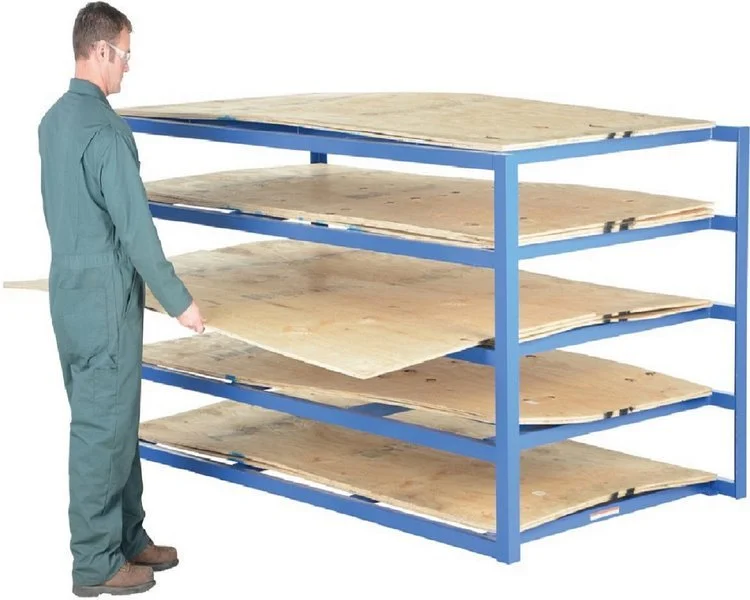Introduction: Rolling ladders are practical and efficient tools used in various industries, workplaces, and even homes. They provide access to elevated areas, allowing individuals to reach objects or perform tasks safely. While rolling ladders may seem simple in design, one intriguing feature sets them apart: the different stairway angles. In this blog post, we will explore the reasons behind the variation in stairway angles in rolling ladders and understand the science that drives their design.
Link to our rolling ladders:
https://www.platformsandladders.com/rolling-ladders/
Ergonomics and User Comfort: One of the primary reasons for incorporating different stairway angles in rolling ladders is to enhance ergonomics and user comfort. People come in different shapes and sizes, and an optimal stairway angle ensures that climbing and descending the ladder is safe and comfortable for individuals of varying heights and body proportions.
By adjusting the angle of the stairs, ladder manufacturers strive to strike a balance between safety and user convenience. Steeper stairway angles, such as those found in step ladders, require less horizontal space but may be more challenging to climb. On the other hand, ladders with shallower angles provide a more gradual ascent and are often preferred for extended use or when carrying heavy objects.
Link to a ladder with a shallower angle for use when carrying an object:
https://www.platformsandladders.com/rolling-ladders/stock-picking-rolling-ladder
Stability and Load Distribution: Another critical factor influencing the choice of stairway angles in rolling ladders is stability and load distribution. Ladders are designed to support the weight of individuals and, in some cases, additional tools or materials. The angle of the stairs plays a crucial role in ensuring that the weight is distributed evenly and that the ladder remains stable during use.
Shallower stairway angles distribute the weight more evenly across the ladder, which increases stability. This is particularly important when working at greater heights or when carrying heavy loads. Steeper stairway angles, while requiring less space, may compromise stability if not properly designed, leading to an increased risk of accidents and injuries.
Link to a ladder with extra stability than usual:
https://www.platformsandladders.com/rolling-ladders/tilt-and-roll-erectastep-tr-series
Space Constraints: Space constraints often dictate the choice of stairway angles in rolling ladders, especially in environments where floor space is limited. Industrial settings, warehouses, and storage facilities are examples of locations where space optimization is crucial.
In situations where horizontal space is limited, a steeper stairway angle allows for a more compact ladder design. This design choice ensures that the ladder occupies less space when not in use, making it easier to store or maneuver in confined areas. However, it is important to strike a balance between space-saving considerations and user comfort to prevent accidents and injuries caused by compromised stability.
Link to a ladder where space constraints are present:
https://www.platformsandladders.com/rolling-ladders/commercial-spring-loaded-ladder
Specific Applications and Industries: Different industries and specific applications may require rolling ladders with unique stairway angles to meet their specific needs. For instance, libraries and retail stores often use rolling ladders with shallower angles to facilitate easier access to upper shelves while providing a safe and comfortable climbing experience for employees.
In contrast, industries such as construction or maintenance may require rolling ladders with steeper angles to provide quick and easy access to different work areas. By tailoring the stairway angle to the specific requirements of the industry or application, rolling ladders can significantly enhance productivity and safety.
Link to a ladder often used in libraries:
https://www.platformsandladders.com/rolling-ladders/office-ladders
Link to a ladder often used in construction and maintenance:
https://www.platformsandladders.com/rolling-ladders/cantilever-series
Conclusion: Rolling ladders with different stairway angles are a testament to the thoughtful design considerations aimed at optimizing safety, ergonomics, stability, and space utilization. The selection of a specific stairway angle depends on factors such as user comfort, load distribution, space constraints, and the intended industry or application.
Whether you encounter a rolling ladder with a shallow angle or a steeper one, each design variation serves a purpose. By understanding the science behind these choices, we can appreciate the careful engineering and craftsmanship that goes into creating rolling ladders, ensuring that users can ascend and descend with confidence and efficiency.
Remember, when using any ladder, it is crucial to adhere to safety guidelines, including proper usage, weight limits, and stability checks, to minimize the risk of accidents and injuries.































